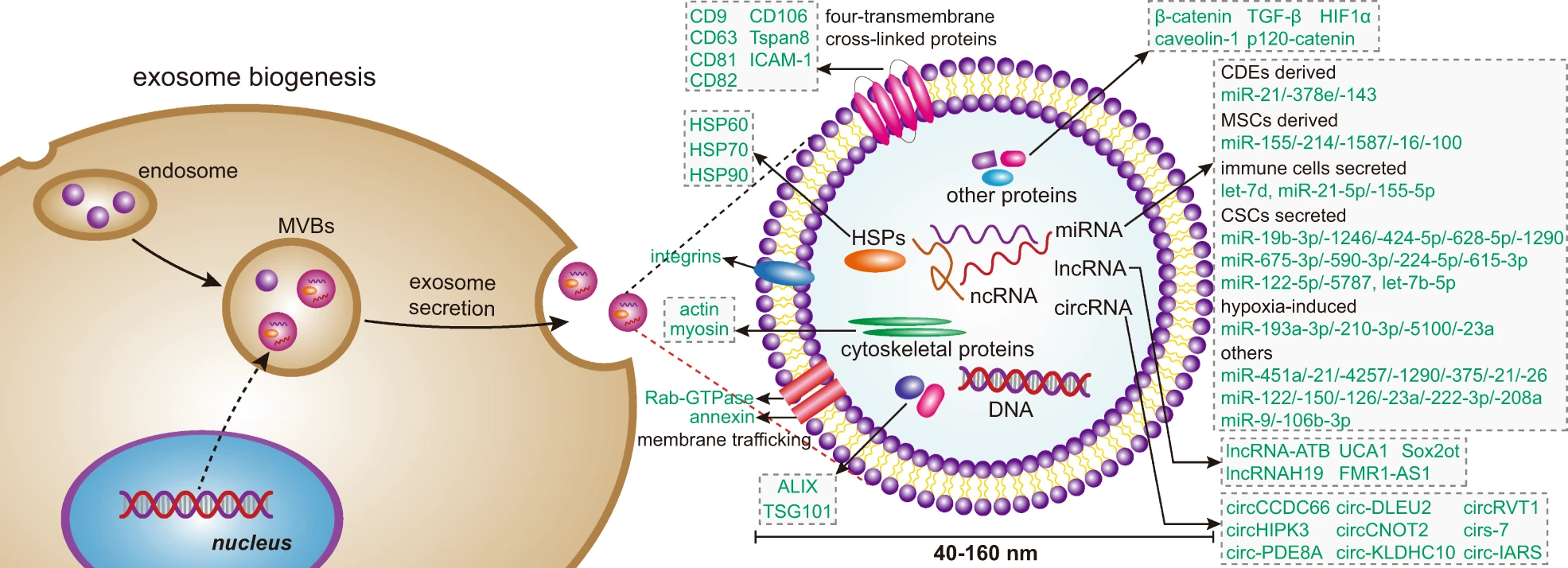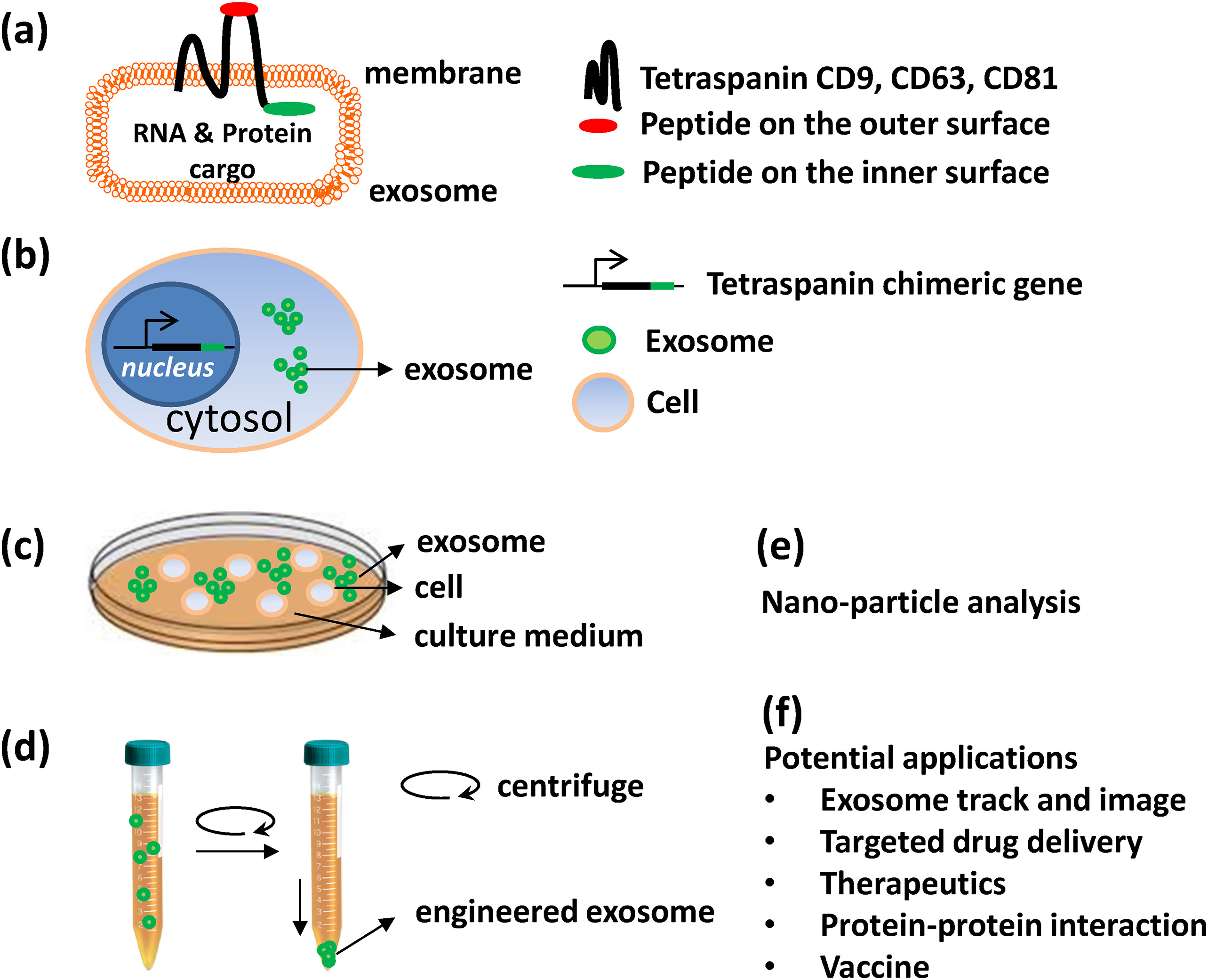Exosome Display Service
- Client-provided protein, peptide, or small molecule information, or customized design by MtoZ Biolabs.
- Fusion design with exosome membrane proteins (e.g., Lamp2b, CD63) for targeted surface display.
- Construction and sequence verification of fusion expression vectors.
- Optimization of expression systems (e.g., mammalian cells, lentiviral vectors).
- Transfection into high-yield exosome-producing cell lines (e.g., HEK293, MSC).
- Culture optimization to enhance exosome secretion.
- Isolation via ultracentrifugation, membrane filtration, and size exclusion chromatography (SEC).
- Removal of cell debris and free proteins to ensure high-purity exosomes.
- Exosome integrity verification by NTA, TEM, Western blot.
- Confirmation of display molecule presence and function via flow cytometry, ELISA, mass spectrometry.
- Delivery of engineered exosome samples with a detailed experimental report, including display efficiency, molecular expression, and exosome characterization data.
Exosome display technology represents a powerful strategy for engineering exosomes to display specific proteins, peptides, ligands, and other functional molecules on their surface. This targeted surface modification significantly expands the utility of exosomes in targeted drug delivery, vaccine development, tumor immunotherapy, and advanced therapeutics. However, challenges such as ensuring molecular stability, biocompatibility, and precise directional display require sophisticated design and high-standard technical platforms.

Dai, J. et al. Sig Transduct Target Ther. 2020.
Figure1. Exosome Biogenesis and its Contents
Exosomes are nanosized vesicles (30–150 nm) naturally secreted by cells and widely distributed in biological fluids. They play essential roles in intercellular communication, molecular transport, and signal transduction. With the rapid advancement of exosome-based technologies in diagnostics, drug delivery, and immunotherapy, surface functionalization has become a critical focus of research and development.
By fusing specific functional molecules—such as antibodies, peptides, receptors, and ligands—onto exosome membrane proteins (e.g., CD63, CD9, Lamp2b), Exosome display technology enables the generation of engineered exosomes with targeting and delivery capabilities. This complex process involves molecular design, vector construction, exosome secretion induction, and purification, leading to the production of biologically active exosomes tailored for specific applications.
Service at MtoZ Biolabs
As a leading provider of exosome technology solutions, MtoZ Biolabs offers a comprehensive Exosome Display Service that leverages advanced molecular engineering, genetic modification, and exosome purification platforms. By combining techniques like gene fusion, membrane protein anchoring, and directional modification, we provide customized exosome surface display of a wide range of proteins, peptides, and ligands. Our service helps clients develop functionalized exosomes for targeted delivery, immunotherapy, vaccine design, and more—solving key challenges like poor targeting and unstable functional molecules—while fully supporting both basic research and drug development.
Analysis Workflow
To ensure high-efficiency molecular display and functional expression, MtoZ Biolabs follows a standardized yet flexible workflow:

Stickney, Z. et al. Biochem Biophys Res Commun. 2016.
Figure2. System Design of Surface Engineering of Exosome
1. Display Molecule Design
2. Vector Construction
3. Cell Culture & Exosome Secretion
4. Exosome Isolation & Purification
5. Quality Control & Display Validation
6. Delivery & Comprehensive Data Reporting
Why Choose MtoZ Biolabs?
✅ Flexible Customization
Tailored solutions for a broad range of display molecules (proteins, peptides, ligands, small molecules), supported by diverse fusion strategies.
✅High-Efficiency Expression Systems
Optimized cell lines and expression vectors to ensure robust exosome production and efficient molecular display.
✅Rigorous Quality & Functional Validation
Strict purification protocols combined with comprehensive molecular and functional validation to ensure exosome integrity and display functionality.
✅End-to-End Service Solutions
Integrated workflow from molecular design to functionalized exosome production, minimizing project timelines and costs.
✅Transparent & Detailed Data Reporting
Full experimental datasets provided to ensure result reproducibility and traceability for every client.
Applications
Our Exosome Display Service is applicable to a wide range of research and industrial needs:
1. Targeted Drug Delivery: Display of targeting ligands (e.g., antibodies, peptides) for precise delivery of therapeutics and nucleic acids to specific tissues and cells.
2. Vaccine Development & Immunotherapy: Display of antigens on exosome surfaces to stimulate specific immune responses, enabling next-generation vaccine platforms.
3. Biomarker Discovery & Diagnostics: Engineering exosomes for high-affinity biomarker capture and detection, enhancing diagnostic sensitivity and specificity.
4. Tumor Microenvironment & Immune Modulation Research: Display of immune modulators and tumor antigens to study exosome-mediated immune regulation and tumor microenvironment interactions.
5. Nanocarrier Engineering & Functional Platforms: Development of multifunctional exosome-based nanocarriers for imaging, targeted therapy, and advanced biomedical applications.
FAQs
1. Are there size limitations for molecules displayed on exosomes?
We recommend display molecules under 100–150 kDa, but larger molecules can be considered based on structural properties. MtoZ Biolabs offers tailored solutions to ensure successful surface display.
2. Can naturally isolated exosomes be modified to display molecules?
Yes, we offer chemical modification for certain exosome types. However, for optimal stability and display efficiency, genetic engineering-based design is highly recommended.
3. Does exosome isolation include functional validation?
Our standard service includes basic quality controls (NTA, TEM, Western blot) and display molecule verification (Western blot, flow cytometry). Advanced functional assays (e.g., cellular uptake, activity assays) are available upon request.
4. What types of molecules can be displayed?
We support a wide variety of molecules, including monoclonal antibodies, scFv, nanobodies, cell-penetrating peptides, signal peptides, receptor ligands, enzymes, signaling molecules, and targeting small molecules, tailored to diverse research goals.
5. How do you validate the display of molecules on exosomes?
Validation includes Western blot for molecular expression, flow cytometry for binding specificity, immunogold TEM for localization on exosome surfaces, and mass spectrometry to confirm molecular presence and abundance—ensuring functional and authentic display.
How to order?







